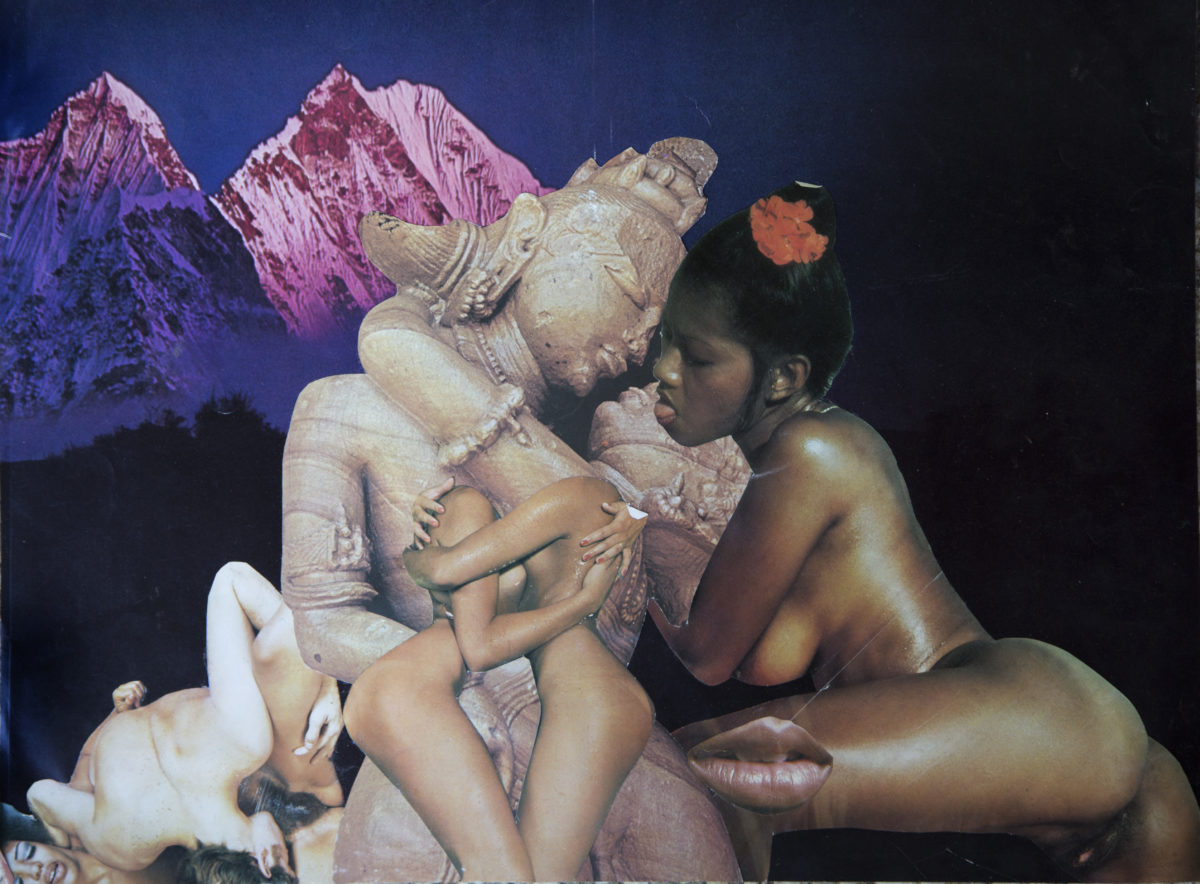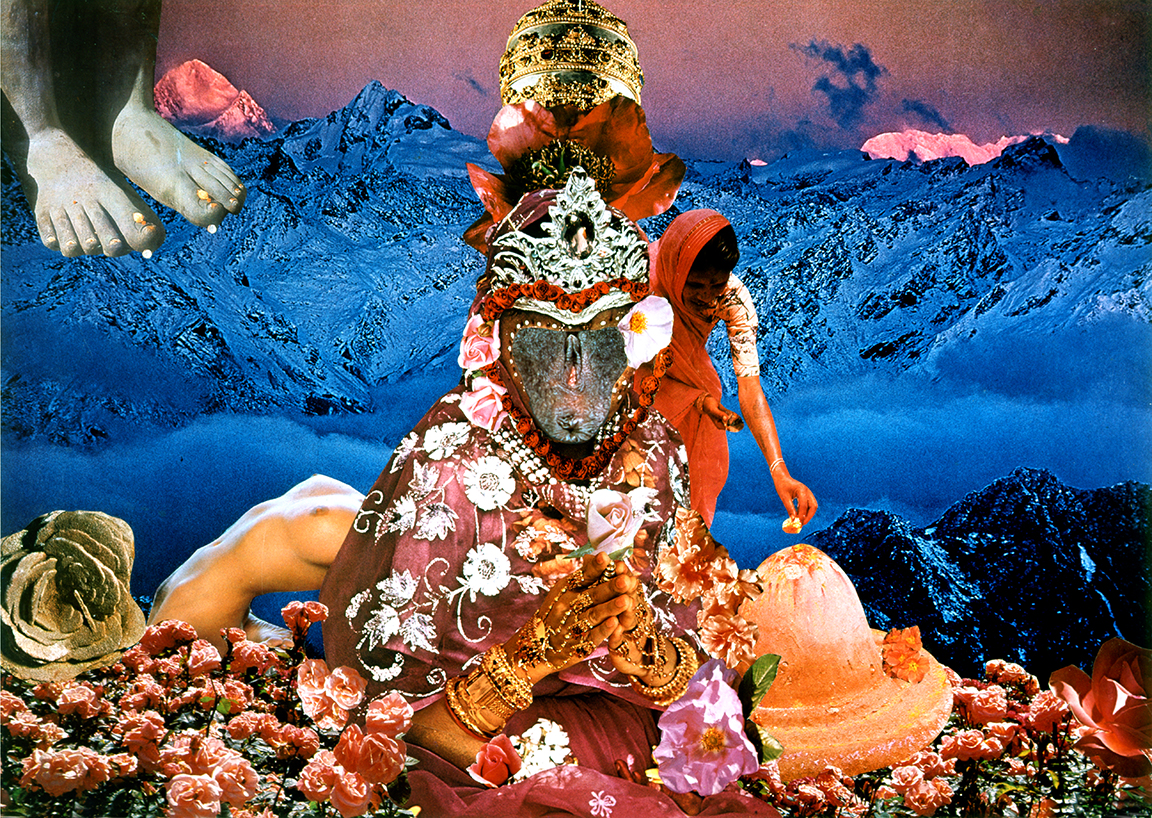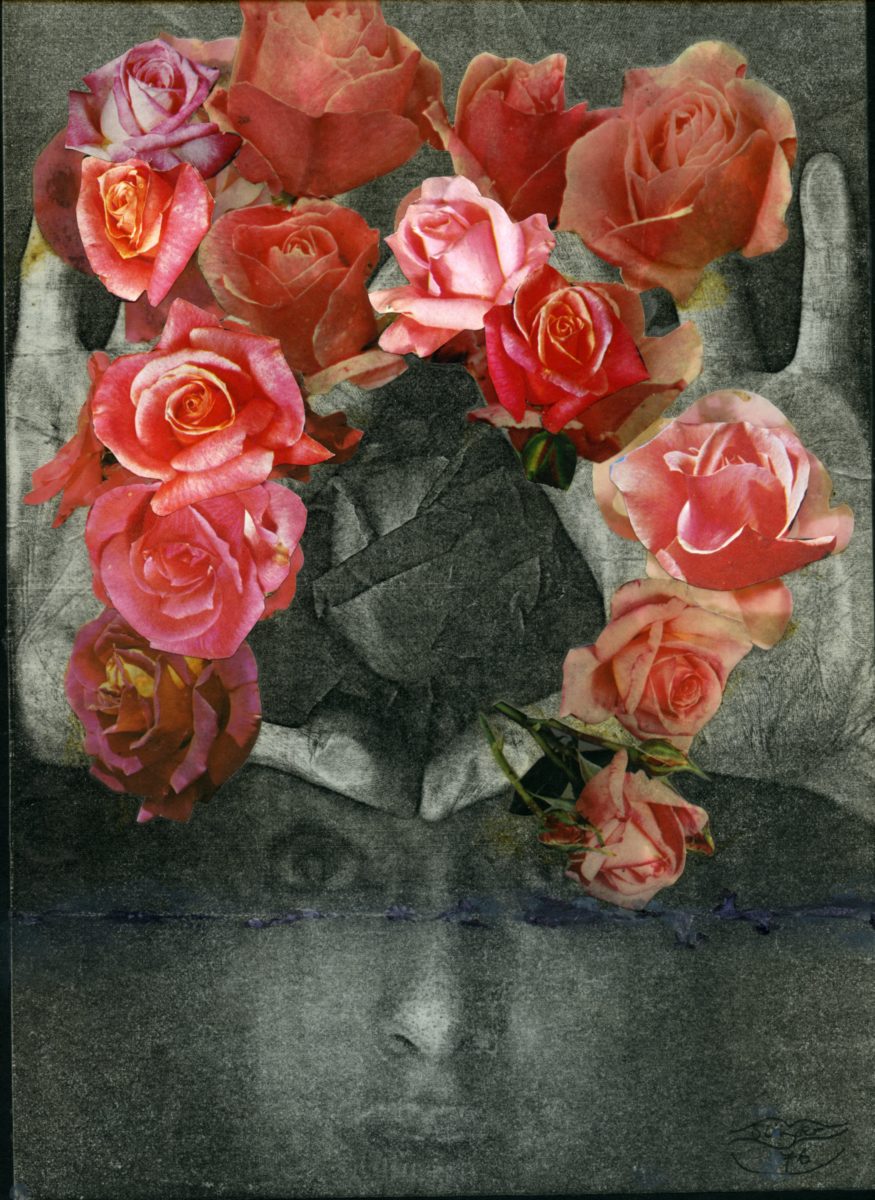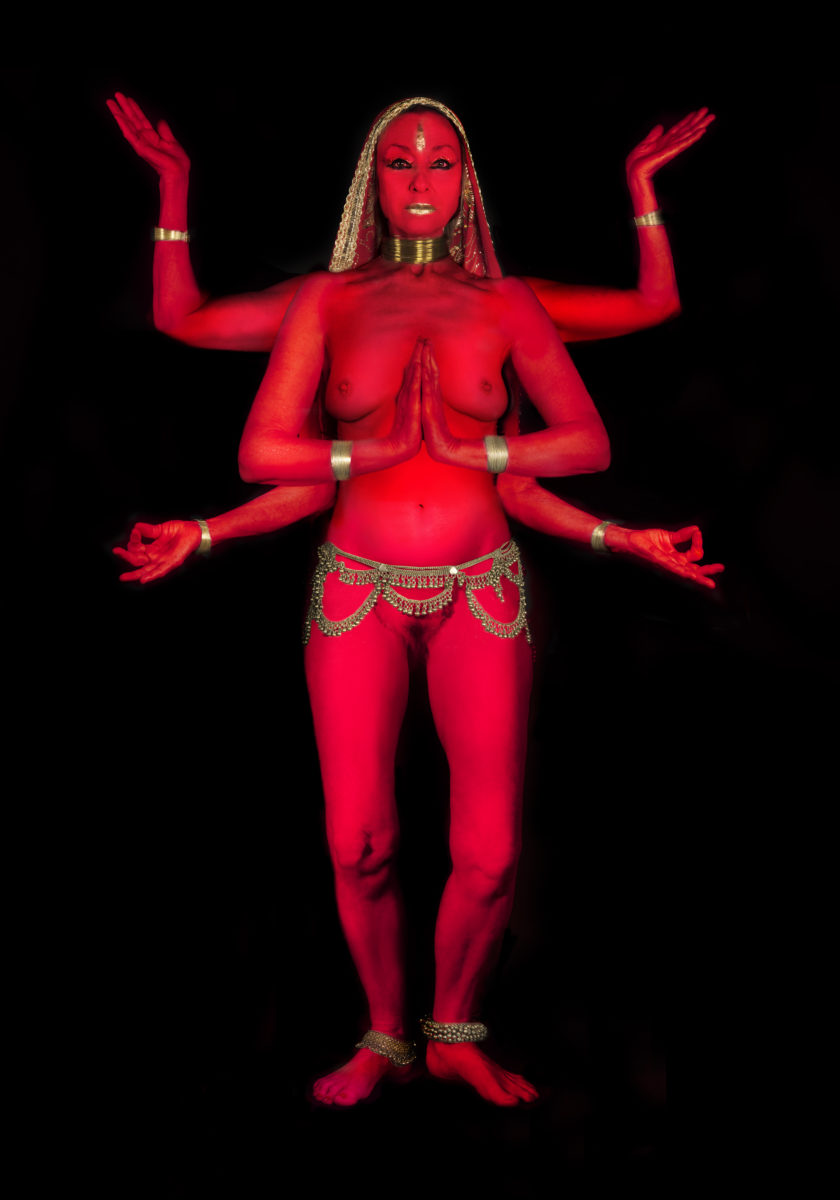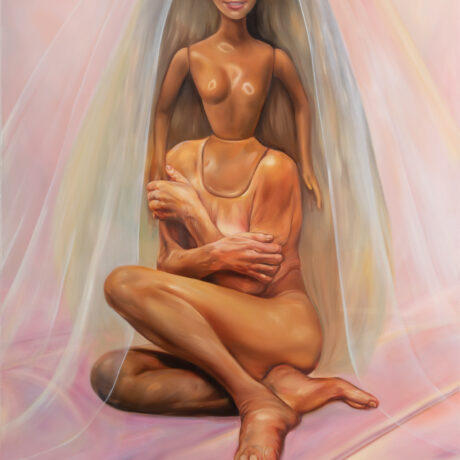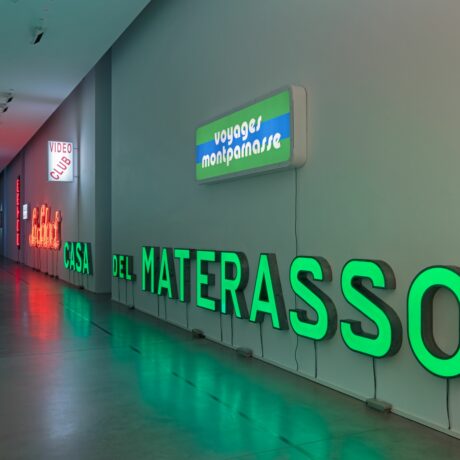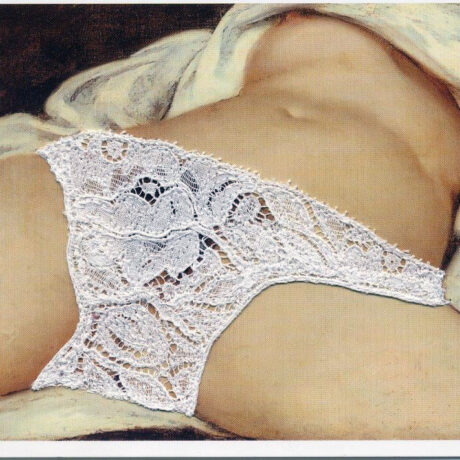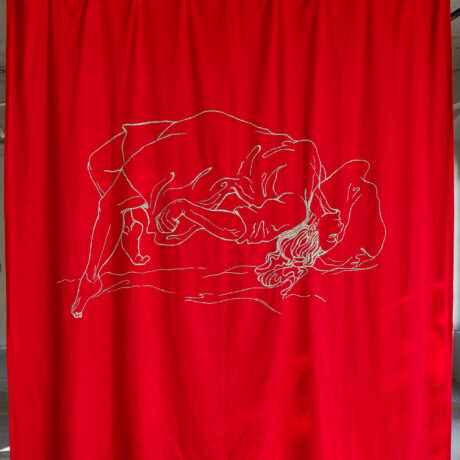At the age of nine, artist Penny Slinger was expelled from her Catholic School for playing with a sanitary towel she’d taken from a machine while on a school trip to the swimming pool. It is the inspiration behind a work, Curse, currently showing at Tantric Transformations, her first solo exhibition at Richard Saltoun gallery. Slinger’s “full frontal collages”, Xerox body prints, images of her lovers, vaginas and erections, flowers and mountains, motifs drawn from the East and West all rub up next to each other with electric eroticism.
In conversation with arts journalist Hettie Judah at Richard Saltoun, Slinger spoke of how symbolic that early experience would become. Liberating women’s bodies from the “cult of shame” has been a foundation of Slinger’s practice since the 1970s, when she first presented her work at the ICA as a graduate of Chelsea.
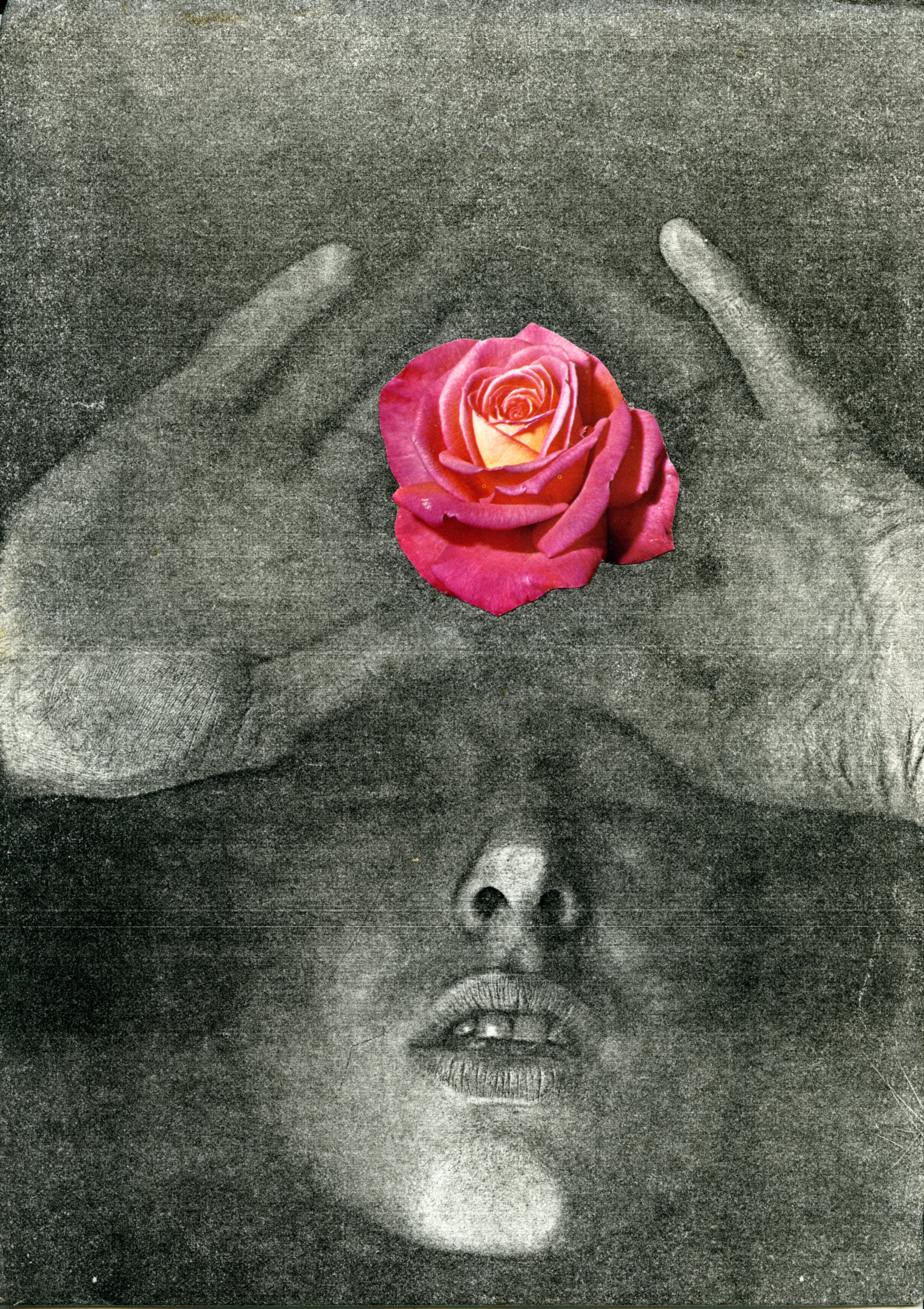
“Xerox body prints, images of her lovers, vaginas and erections, flowers and mountains, all rub up next to each other with electric eroticism”
Evolving from earlier, darker, self-analytical works, Slinger later moved towards more joyful and ecstatic collages, equally experimental, insisting on the subconscious sides of sexual experience and the ways they surface in culture in images. Travelling to India and Thailand, where she was exposed to Tantric art and collected erotic imagery, inspired her to represent feminine energies in new ways.
“When I was growing up there wasn’t really any erotic imagery for women at all”, Slinger told Judah. “I wanted to say, I’m not just an object, I’m a subject. The prevalent thought then was that women don’t really get pleasure from sex, but as I grew up, I thought that doesn’t sound right to me, this is a hell of a lot of fun!” In 1999, Slinger published a book, Sexual Secrets: The Alchemy of Ecstasy, authored with Nik Douglas, is an exploration of sex and mysticism in the East, diving into the world of physical love as a path to profound spiritual awakening. It has sold more than a million copies.

Drawing on the “toolkit of surrealism” she had built from extensive research on Max Ernst, informed further by encounters with Roland Penrose, Slinger’s intention, she said, was to unveil the inner workings of the feminine. She explored fantasies, dreams and the subconscious desires of women to understand how “a woman is looked at in our society, how I was wanting to look at her, and how she’s looked at in the art world.”
Creating an entrancing, richly sensual landscape to encourage “an orgasmic engagement with life”, Slinger seeks to show the feminine and feminine power, manifesting the Tantric concept of “shakti”, not as something exclusively female, but that resides in people of all genders.
“Though Slinger’s works are the result of personal exploration, they seek out truths that are universal”
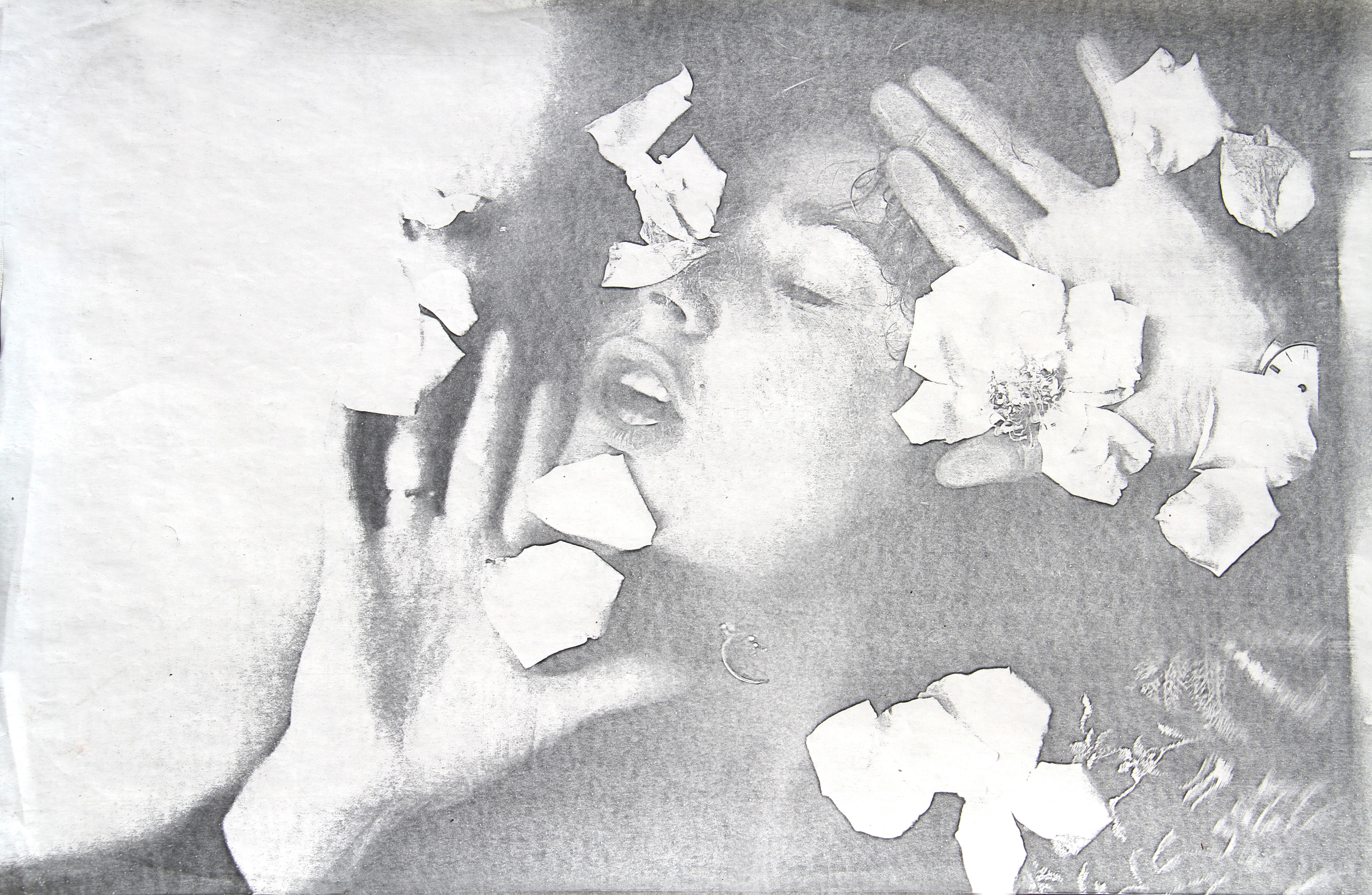
“I’ve always tried to live outside the norm,” Slinger said. Although her works are the result of personal exploration and experimentation, they have seek out truths that are universal. At seventy-one she is still using her own body in her work in defiant new ways. Her next mission is to tackle ageism—something she sees as the “last bastion of feminism”. “The wisdom and beauty of the accumulated experience of women later in life is cast aside in our society.”
Slinger is also the subject of a documentary film detailing the trauma that lead to her pivotal 1977 work, An Exorcism, Out of the Shadows, now showing in the UK.


